What are the most important public holidays in Finland? What are their unique Finnish traditions? Will the shops and restaurants be open?
In this blog post, you’ll find answers to all of these questions.
Finland is no different from other countries in celebrating important dates of the year. Some special days are celebrated as official public holidays and they are free days from work. Other days are more symbolic and have more of a social effect.
Table of Contents
- Why is it important to know the public holidays in Finland?
- Special days and public holidays in Finland
- New Year in Finland
- Epiphany in Finland
- Valentine’s Day in Finland
- Shrovetide in Finland
- Easter in Finland: Palm Sunday, Good Friday, Easter Sunday, and Easter Monday
- Vappu in Finland
- Mother’s Day in Finland
- Ascension Day in Finland
- Whitsunday in Finland
- Midsummer Eve and Midsummer in Finland
- All Saints’ Day in Finland
- Father’s Day in Finland
- Pikkujoulut in Finland
- Finland’s Independence Day
- Christmas in Finland
- If you work in Finland, know these free holidays
Why is it important to know the public holidays in Finland?
There are several reasons why I think it’s good to know about the public holidays in Finland:
- If you are visiting Finland, shops, museums and restaurants can be closed on certain public holidays. Public transport can be almost nonexistent too. For example, Midsummer seems to make big Finnish cities ghost towns as everyone goes to their cabins and countryside.
- If you work in Finland, there are 13 official public holidays that are free days from work. More about those in the last part of this article.
- When you know the insights of a holiday, you have the option to celebrate the holiday in a local way. For example, Vappu is a spring festival that is very unique. Psst… We love the food traditions related to public holidays. I have created an eCookbook around them for you!
Finnish baking magic
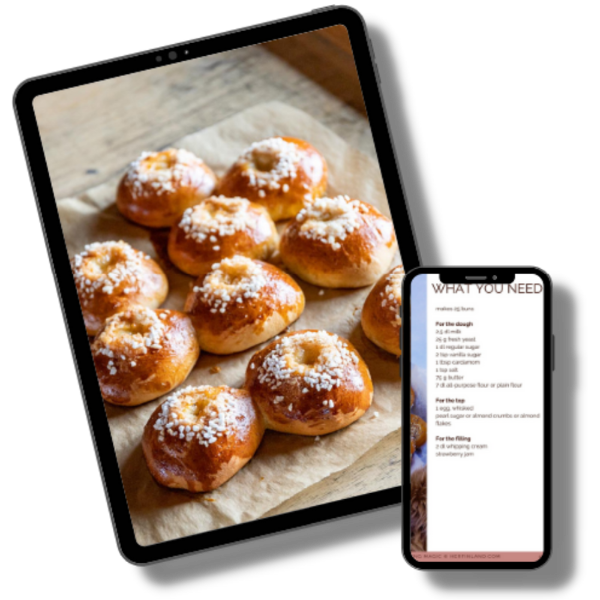
My praised Finnish Baking Magic eCookbook & bonus videos Recreate Finnish bakes in your own kitchen hassle-free!⭐⭐⭐⭐⭐
Special days and public holidays in Finland
Let’s dive into all the special days in Finland month by month, starting from January.
New Year in Finland
When: 30 December and 1 January
In Finnish: uudenvuodenaatto (New Year’s eve), uusi vuosi (New Year)
New Year’s day is a public holiday in Finland, and all shops are closed. However, New Year’s Eve is still a typical working day, and shops are open. They might close earlier, though. All restaurants are open on New Year’s Eve but on January 1st, some are definitely closed.

New year is a big celebration in Finland, but the overall feeling of it is casual and relaxed. Due to sustainability efforts, many have abandoned the firework shows that lit up the sky.
Traditional finger food includes sausages, potato salad, cheeses, and glasses of bubbly. Traditionalists celebrate the new year by telling fortunes for the year ahead by melting beeswax.
Each person is given a small piece of beeswax which is melted and poured into cold water. The form of the cooled wax will reveal what the year will have in store for the participants.
The traditional greeting is “Hyvää uutta vuotta!” (Happy New Year!) in Finnish.
Epiphany in Finland
When: 6 January
In Finnish: loppiainen
The Epiphany celebrates the Magi’s visit and gifts to baby Jesus and marks the end of their Christmas holidays. We Finns use this day to dismantle our Christmas decor. If any food is leftover from Christmas celebrations, this is the day to eat it and get rid of it.
This day is a public holiday. Most shops and restaurants are closed. The traditional greeting is “Hyvää loppiaista!” (Happy Epiphany!) in Finnish, but this isn’t a popular greeting.
Valentine’s Day in Finland
When: 14 February
In Finnish: ystävänpäivä
Valentine’s day in Finland is focused on friendships, not really romantic love. I know so many Finnish-international couples, who learned this… well, by entering this day with high expectations and receiving zero effort.
Cultural differences, ha? Instead of a romantic message to your partner, get ready to send your friend a message: ”Hyvää ystävänpäivää!” This special day is not a public holiday in Finland. All shops and restaurants operate as they would on a normal day but there are lots of 2-for-1 deals available.
Shrovetide in Finland
When: In mid and late February
In Finnish: laskiainen (Shrovetide), laskiaissunnuntai (Shrove Sunday), laskiaistiistai (Shrove Tuesday)
Six weeks before Easter, Shrovetide is a low-key celebrated in Finland. Shrovetide is not a public holiday and all open hours are normal. The Shrovetide traditions in Finland are visible in food culture and winter activities.
Sledding is a must-Shrovetide activity. Sledding is done as a family but also in schools and kindergartens as a special activity.

The traditional greeting is “Hyvää laskiaista!” or “Liukasta laskiaista! (Slippery Shrovetide!) in Finnish.
Easter in Finland: Palm Sunday, Good Friday, Easter Sunday, and Easter Monday
When: The dates of Easter change each year
In Finnish: pääsiäinen (Easter), palmusunnuntai (Palm Sunday), pitkäperjantai (Good Friday), pääsiäissunnuntai (Easter Sunday) and pääsiäismaanantai (Easter Monday)
The celebration of Easter in Finland starts one week before the actual Easter days: on Palm Sunday. This day is the day for Finnish children. To describe it in one sentence, I would say it is the Finnish equivalent of Halloween.
Kids gather willow twigs and decorate them pretty with ribbons and feathers. Then it’s time to dress up as a little witch, wizard, or cat and go door to door.
Wishing the door opener (or the people in a zoom meeting, with covid times) good health and happiness by chanting a rhyme and waving the willow, children give the twigs and in exchange expect candy or money.
One version of the rhyme is: “Virvon, varvon, tuoreeks, terveeks, tulevaks vuodeks. Vitsa sulle, palkka mulle!”
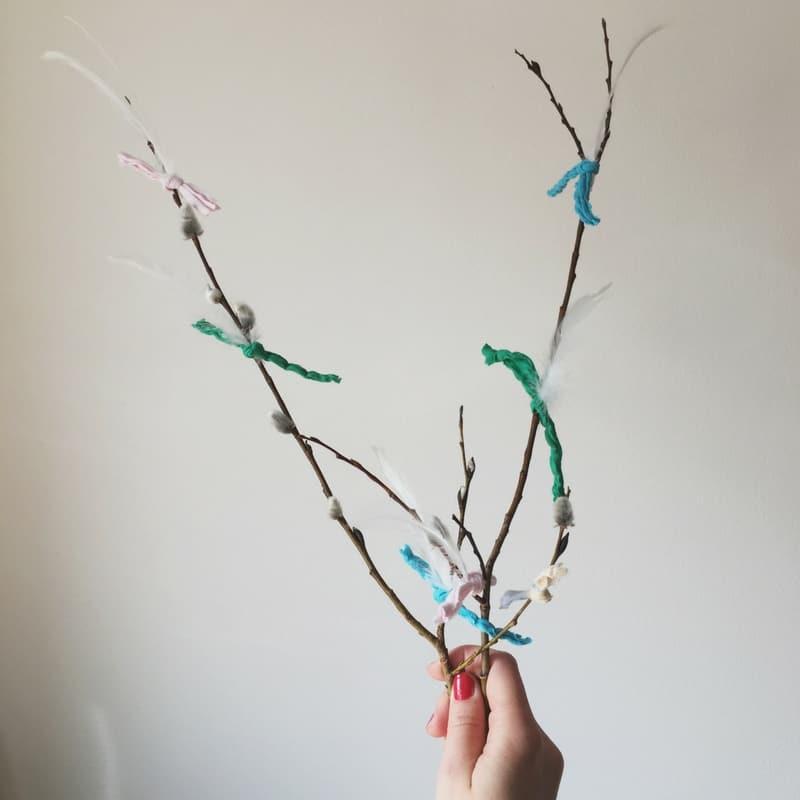
Good Friday commemorates the crucifixion and death of Christ before he rises once more on Easter Sunday. Good Friday, Easter Sunday, and Easter Monday are all public holidays. All shops and schools are closed. Public transport can be partly stopped, too.
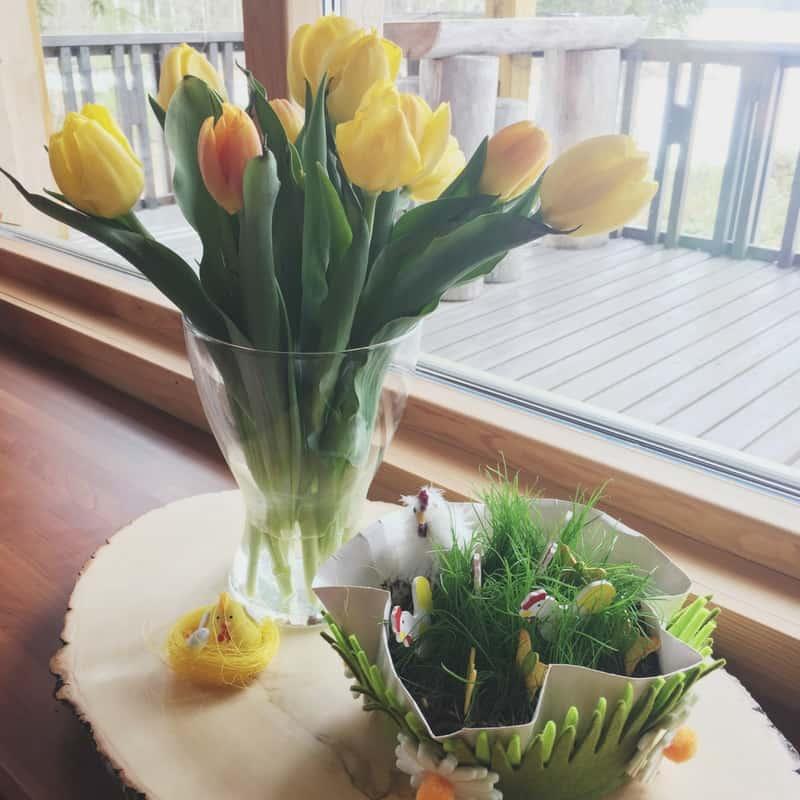
During Easter in Finland, families join together and traditionally eat lamb as their main dish and mämmi, cold and sweet rye pudding, as a dessert. We also decorate homes with Easter grass, yellow color, willow twigs, and painted eggs to symbolize rebirth.
The traditional greeting is “Hyvää pääsiäistä!” (Happy Easter!) in Finnish.
Vappu in Finland
When: 30 April and 1 May
In Finnish: vappuaatto (30 April), vappu (1 May)
Vappu celebrates the coming of spring after the long cold winter months and is a time of grand celebration in Finland. It is also celebrated as International Labor Day. This celebration is very unusual in the Finnish culture where most holidays are calm family gatherings.
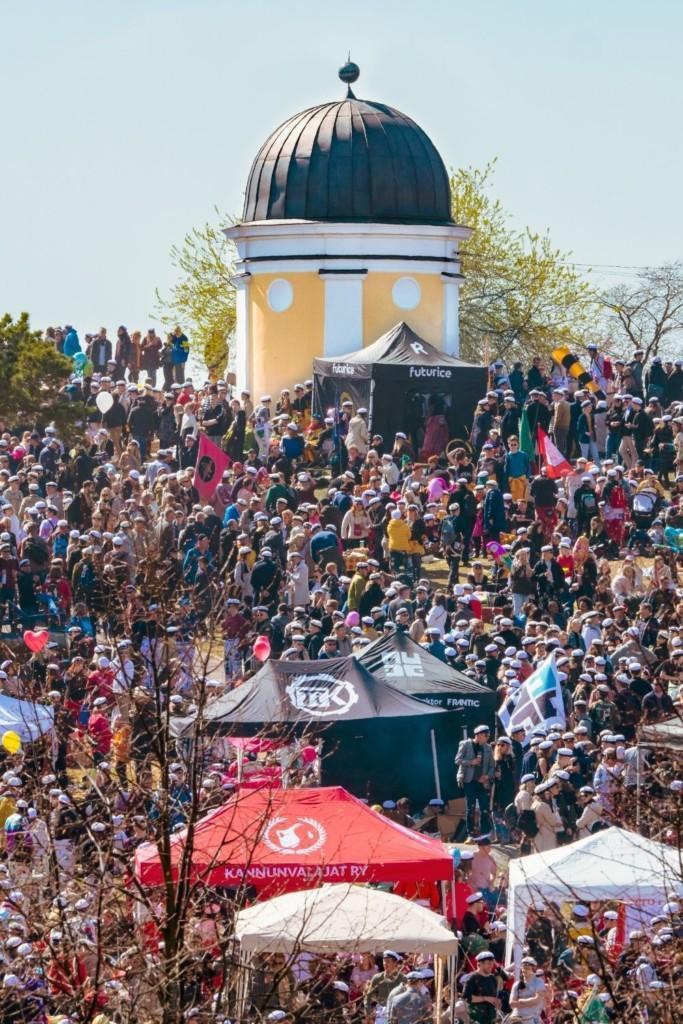
There is a carnival-like atmosphere on Vappu, and lots of people outdoors enjoying a vappu picnic on May 1. Schools and shops are typically closed for the Vappu day celebration. Many restaurants are open throughout vappu day in Finland. May 1 is a free day from work.
The traditional greeting is “Hyvää vappua!” (Happy May Day!) in Finnish.
Mother’s Day in Finland
When: The second Sunday of May
In Finnish: äitienpäivä
All mothers and grandmothers are celebrated in Finland this Sunday. Usually, the mom gets breakfast in bed and a gift. Flowers are a popular choice. Restaurants are full so if you are brunching or dining out, make sure to make a table reservation early.
Mother’s day is not a public holiday. Opening hours tend to be typical Sunday hours, meaning that many shops will be closed. The traditional greeting is “Hyvää äitienpäivää!” (Happy Mother’s Day!) in Finnish.
On the same weekend, Saturday focuses on honoring and remembering people who are unintentionally childless. This Saturday is called Lapsettomien lauantai.
Ascension Day in Finland
When: Date changes each year, always Thursday in mid or late May
In Finnish: helatorstai
Ascension Day in Finland celebrates Jesus’ ascension to heaven 40 days after Jesus’s Resurrection in Easter. The tradition is essentially a Catholic practice, and most Finnish people are Lutheran, but it is still marked on the calendar as a day of celebration.
How to connect with the finns
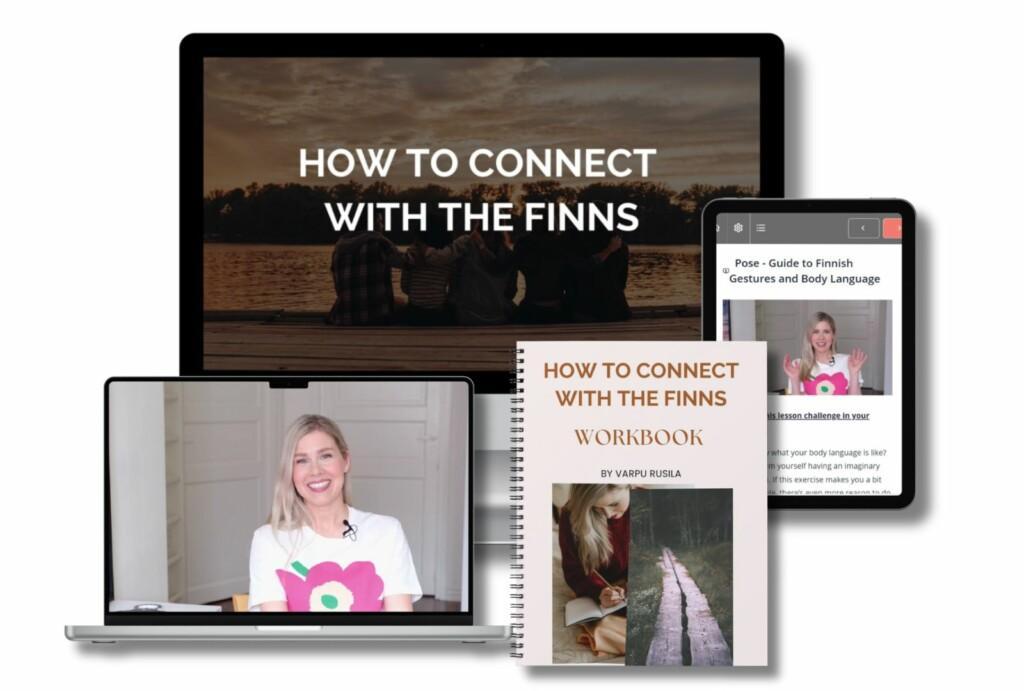
Understand Finns even better and build relationships with confidence. ⭐⭐⭐⭐⭐
The schools and shops are typically closed. As this public holiday falls on a Thursday many people take an unpaid workday for Friday thus scoring a mini holiday from Thursday to Sunday. Transport services usually default to their Sunday settings on Ascension Day.
The traditional greeting is “Hyvää helatorstaita!” (Happy Ascension Day!) in Finnish, but this isn’t a popular greeting.
Whitsunday in Finland
When: Date changes each year, always Sunday in late May or early June
In Finnish: helluntai
Whitsunday is a public holiday in Finland where traditionally it marks the holy spirit’s descent on Jesus’ disciples 50 days after the resurrection. There is a super popular saying in Finnish that if you don’t have a loved one by this day, you will be alone all summer. In Finnish it goes: “Jos ei heilaa helluntaina, niin ei koko kesänä.”
Unlike other religious holidays, Whitsunday is relatively low-key, and businesses and shops still trade if they are usually open on Sundays. This special day doesn’t have a greeting.
Midsummer Eve and Midsummer in Finland
When: Third weekend in June
In Finnish: juhannusaatto (Midsummer Eve), juhannus (Midsummer)
This is the second most important annual celebration in Finland, very close behind Christmas. Midsummer Eve is where many Finns start their summer holidays and mark an earlier pagan celebration of the summer solstice (the longest day of the year).

If you work with Finns, it’s often laughed that nothing gets done after Midsummer and before August in Finland. Finns are in summer vacation mode. Midsummer in Finland is celebrated with family and friends, and people often leave the city for summer cabins and lazy days, lighting bonfires and soaking in saunas.
Traditionally this evening is full of love spells and finding your other half. If you visit a Finnish city in Midsummer, it will almost be a ghost town. Most businesses operate on Midsummer Eve, but offices and special shops can be closed.
Midsummer’s Day closes pretty much everything in Finland. If you are in town on this day, check early what services are available.
The traditional greeting is “Hyvää juhannusta!” (Happy Midsummer!) in Finnish.
All Saints’ Day in Finland
When: Late October or early November
In Finnish: pyhäinpäivä
All Saints’ Day in Finland follows an ancient harvest ritual of Kekri. This day marked an important time of the year when family and friends gather to celebrate the food of the harvest.
Nowadays, this day focuses on departed loved ones. Finns light remembrance candles in cemeteries for loved ones that have passed. This day is a public holiday and shops are closed.
Father’s Day in Finland
When: The second Sunday of November
In Finnish: isänpäivä
All dads and grandfathers are celebrated in Finland this Sunday. Usually, dad gets breakfast in bed and a gift. Restaurants are full so if you are brunching or dining out, make sure to make a table reservation early.
Father’s day is not a public holiday. Opening hours tend to be typical Sunday hours, meaning that many shops will be closed. The traditional greeting is “Hyvää isänpäivää!” (Happy Father’s Day!) in Finnish.
FinNISH CONNECTION COLLECTION 🇫🇮

Finland-themed sweaters and accessories made-to-order. 🧡 Worldwide shipping.
Pikkujoulut in Finland
When: From November through mid-December
In Finnish: pikkujoulut aka little Christmas
November and December are joyful months in Finland. Besides Independence Day, Christmas, and New Year, we have a ton of little Christmas – parties (called pikkujoulut in Finnish). Every workplace has a pikkujoulut and many hobbies and groups of friends have them too.
On an average Finn, an active Finn can have 3-6 pikkujoulu parties to attend. Usually, pikkujoulut takes place on a Thursday, Friday, or Saturday and they can last through the night.
Finland’s Independence Day
When: 6 December
In Finnish: itsenäisyyspäivä
Finland gained their independence from Russia over a hundred years ago, in 1917. 6th December is a very patriotic day. The Finns fly their national flag and there’s a big gala night at the Presidential Castle.
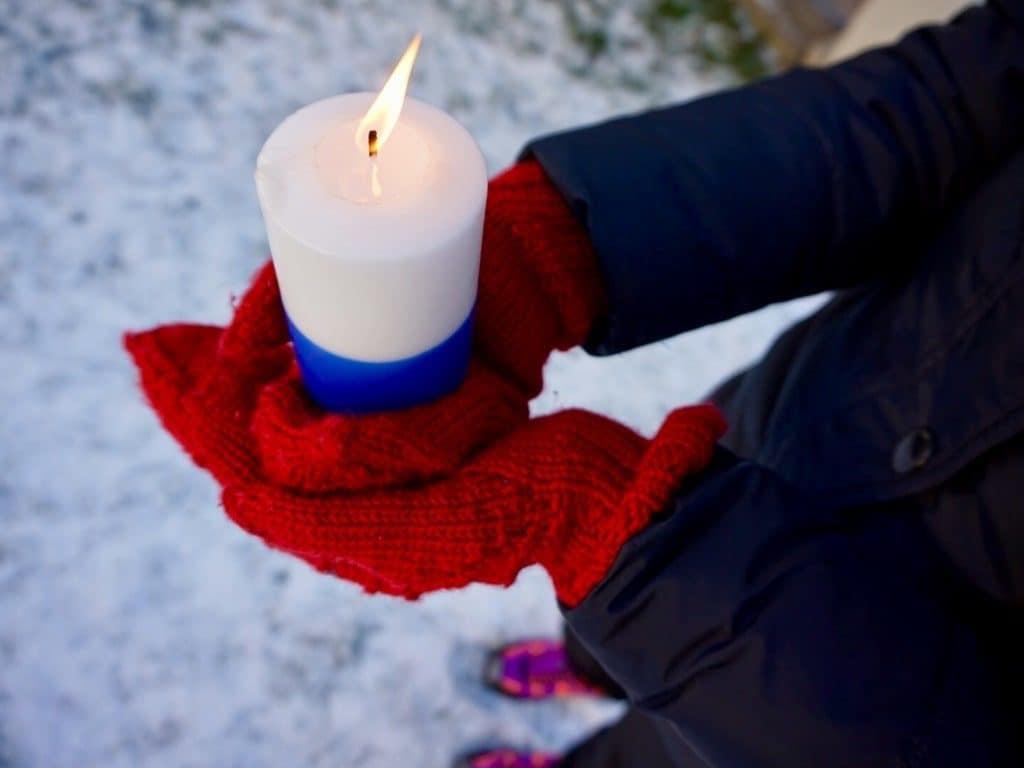
Businesses, shops, and schools are closed on Finland’s Independence day. Many restaurants are open for celebrations. The traditional greeting is “Hyvää itsenäisyyspäivää!” (Happy Independence Day!) in Finnish.
Christmas in Finland
When: 24 – 26 December
In Finnish: jouluaatto (Christmas Eve), joulupäivä (Christmas Day), Tapaninpäivä (St. Stephen’s Day)
Unlike many Western traditions, Christmas Eve is the biggest night of celebration rather than Christmas day in Finland. The Finns have the biggest feast on Christmas Eve and yes, we also open the gifts on Christmas Eve!
Church and sauna are popular Christmas Eve traditions. Most Finns love Xmas decorations and many families have already earlier decorated the Christmas tree and the house.
Pretty much all businesses and shops close on Christmas Eve at noon, although some grocery stores decide to remain operational. Many restaurants are closed during Xmas in Finland so it’s important to check out the opening hours before this holiday.
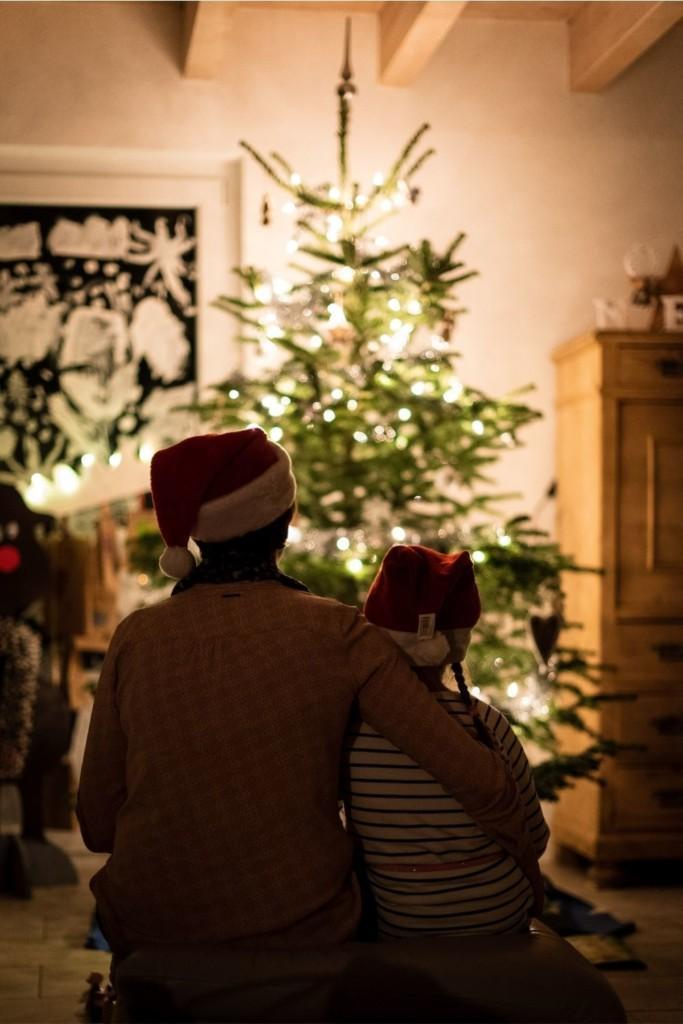
Christmas day is a laid-back affair where families join to enjoy the leftover bounty of their Christmas Eve banquet. Christmas day is a public holiday, where businesses, schools, and shops remain closed.
Finland celebrates St Stephen’s day in honor of the first Christian martyr who died in 33 CE. This day is a time of family togetherness, church visits for the religious, and markets and festivals. Outdoor activities such as skating and skiing are popular ways to spend this national holiday. St Stephen’s day is a public holiday, and businesses, schools, and shops close for the celebrations.
The traditional greeting is “Hyvää joulua!” (Merry Christmas!) in Finnish. There are lots of other Christmas greetings in Finnish, too.
If you work in Finland, know these free holidays
If these official public holidays in Finland happen on your workday, you get a free day from work or are paid extra to work:
- New Years Day
- The Epiphany
- Good Friday
- Easter Sunday
- Easter Monday
- First of May
- Ascension Day in May
- Whitsunday in May or June
- Midsummer day in June
- All Saint’s day
- Independence day
- Christmas day
- St Stephen’s Day
But, if the public holiday is on Sunday or Saturday and you work from Monday to Sunday, you don’t get an extra holiday day for that holiday. Hope that made sense.
These following days are not free days from work but an employer might suggest that it’s a free day or only half of a working day: Last Day of April, Midsummer Eve, Christmas Eve, and New Year’s Eve. These days are also typical to take free by using flexible hours if you have that option.
Closing Thoughts
In Finland, we have some wonderful customs and traditions for the annual celebrations. I hope this post helped you a bit to understand what to expect from a public holiday in Finland.
Which holiday would you like to know more about? I would love to know it in the comments!
Looking for more public holidays information in Finland? Check out some of my other posts:
- 10 Unique Ways to Say Merry Christmas in Finnish
- 6 Funny Finnish Easter Traditions
- Finnish New Year’s Traditions are Effortless and Fun
- 5 Finnish Independence Day Traditions You Should Know
- How to Prepare Yourself For Culture Shock in Finland


Maritxu
Wednesday 6th of December 2023
When would you say is the best time to visit Finland to experience a cultural holiday ?
Caroline
Friday 22nd of April 2022
Awesome!! 🤩🤩🤩😍
Varpu
Monday 25th of April 2022
Kiitos so much Caroline!
Rubén
Saturday 16th of April 2022
Hi!
In the Ascension day you say that “ many people take an unpaid workday for Friday”. In Spain this kind of days many people use to take a (paid) vacation day, discounting it from the total amount of yearly vacations (around 23 days). Is this not possible in Finland? Or is just a think that is made that day?
Regards!!
Varpu
Monday 25th of April 2022
Hei Ruben! A great question. Yes, you can take it from our yearly vacation time too!